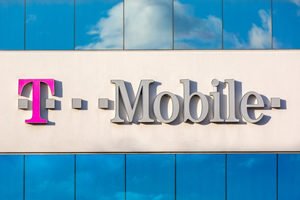The very first “rule” in my Tech Wealth Blueprint holds that “great companies have great operations.” As we’ve seen, great operations require great leaders.
Now, they don’t necessarily have “rock star” CEOs with name recognition like Elon Musk or Mark Zuckerberg, but they do have competent and experienced leaders with the unique vision and wherewithal to outlast global, political, and economic upheaval on the way to making their product or service “indispensable” for billions of consumers.
The kinds of leaders who can reshape the world.
That’s the kind of leader – and the kind of company, of course - I’m going to fill you in on today. You might not be familiar with him; he’s not as recognizable as Elon Musk or Mark Zuckerberg…
…but I’ll put him (and his 300-year plan) up against those Silicon Valley greats any day of the week.
The Persistence of Vision
 The FANG companies have all found outrageous success based on their dominant approach to the individual tech trends of the 21st century – Facebook and social media, Apple and mobile miniaturization, Netflix and media streaming, and, last but not least, Alphabet (Google) and online search.
The FANG companies have all found outrageous success based on their dominant approach to the individual tech trends of the 21st century – Facebook and social media, Apple and mobile miniaturization, Netflix and media streaming, and, last but not least, Alphabet (Google) and online search.
Of course, these massive, market-leading tech firms are all built more or less around the vision of one person, or at least a small group of them.
Masayoshi Son has vision, too, but his firm is building one of the most broad-based approaches to those same tech trends as any of the big FANG players.
Consider the tech fund he’s set up, called – you guessed it – the Vision Fund. It’s now the world’s largest private equity fund.
It’s pulled in close to $100 billion from countries like Saudi Arabia and the United Arab Emirates, as well as tech heavy hitters like Apple Inc. (Nasdaq: AAPL) and Qualcomm Inc. (Nasdaq: QCOM), which both have a burning interest in innovating “the next big thing.”
Son’s vision, for instance, led him to grab a 32% stake in $400 billion Chinese e-commerce juggernaut Alibaba Group Holding Ltd. (Nasdaq: BABA), a savvy play on the unstoppable rise of the Chinese middle class.
Right now, at an “early” stage in his 300-year plan, Son’s firm is starting to look a whole lot like Facebook did at the end of the last decade.
Son Owns Some Huge U.S. Household Names
Masayoshi Son’s Softbank Group Corp. (OTCMKTS: SFTBF) is “big in Japan,” where it’s a dominant presence in that country’s broadband and fixed-line telecom industry, as well as its Internet, finance, and technology sectors. It’s also the world’s 62nd largest company, according to Forbes.
But it’s actually one of tech’s quietest, most powerful “pick-and-shovel” plays. You see, through sharp acquisitions - chiefly UK-based ARM Holdings Plc. (Nasdaq ADR: ARMH) for $32 billion – Softbank has essentially become a supplier to many of the companies whose goods Americans use on a daily basis. ARM licenses the designs for chips that are now in 95% of all smartphones. The firm’s list of clients read like a "who’s who" of the consumer tech industry – Apple, Samsung, Qualcomm, Nokia, and lots more.
Softbank also recently announced it was looking to merge with Charter Communications Inc. (Nasdaq: CHTR), a $95 billion company that’s the second-largest cable provider in the United States and the third-largest pay TV operator. It’s also the fifth-largest telephone provider.
[mmpazkzone name="in-story" network="9794" site="307044" id="137008" type="4"]
 Add to that the credible rumors that Softbank is looking to merge with T-Mobile U.S. Inc. (Nasdaq: TMUS), and you start to see that SoftBank is going to make a play for a major piece of the dynamic mobile telecom space – including content.
Add to that the credible rumors that Softbank is looking to merge with T-Mobile U.S. Inc. (Nasdaq: TMUS), and you start to see that SoftBank is going to make a play for a major piece of the dynamic mobile telecom space – including content.
But Son has been building SoftBank steadily, quietly, and expertly for decades now.
It started as software company in the Japanese market in 1981. But even then, Son’s vision included the mammoth American market. By 1994, SoftBank bought Ziff Davis Publishing, which published the leading trade journal, PC Week.
By 1996, it launched Yahoo! Japan and was the largest shareholder in Yahoo! at about the same moment that company was at the top of the search “heap.”
Since then, it has acquired various telecoms around the world, building out one of its core divisions. On this side of the Pacific, SoftBank purchased telecom upstart Sprint Corp. (NYSE: S) in 2013.
Since then, Sprint has become a consistent thorn in the side of the former Belles – AT&T Inc. (NYSE: T) and Verizon Communications Inc. (NYSE: VZ). SoftBank has racked up some losses trying to make a stand in the U.S. mobile market, but it does have 58 million subscribers and continues to thwart AT&T and Verizon’s aspirations of duopoly.
What this all points to is something big…
Son Is Building Out the “Connected World”
Though he doesn’t have the celebrity of Jeff Bezos, Elon Musk, or Mark Zuckerberg, he shares with them his vision of an evolving, tech-driven world, where many markets and industries are subtly interconnected – part of the “Convergence Economy” we’ve talked about, and profited on, for years.
And like the U.S. “Tech Triumvirate” of Bezos, Musk, and Zuckerberg, Son has attracted critics who don’t understand his big picture; who say SoftBank has “taken on too much debt”; or who say that there are “too many moving parts,” or too there’s little to show for all his efforts.
These naysayers do nothing to ding the investing case for owning Masayoshi Son’s company.
Besides, when you’re inventing new worlds - whole new economies and industries - being misunderstood comes with the territory.
 For instance, no one thought much of an online bookseller. And to this day, plenty of (myopic) Wall Street analysts are uncomfortable with how Amazon is run, with the fact that most of its operating capital coming from its cloud computing division, Amazon Web Services (AWS). AWS funds other divisions, and all of Amazon’s cash gets plowed back into its businesses instead of executives setting some aside for a rainy day.
For instance, no one thought much of an online bookseller. And to this day, plenty of (myopic) Wall Street analysts are uncomfortable with how Amazon is run, with the fact that most of its operating capital coming from its cloud computing division, Amazon Web Services (AWS). AWS funds other divisions, and all of Amazon’s cash gets plowed back into its businesses instead of executives setting some aside for a rainy day.
When Facebook Inc. (NASDAQ: FB) went public, the company was, in some cases literally, a laughingstock, both for the problems that beset the IPO itself and for the fact that Zuckerberg just seemed to be sitting around waiting for the technology to catch up with his vision. Wall Street didn’t “get” that…
Look who’s laughing now.
And, as you read this, you’ll find no shortage of analysts fretting over the admittedly less-than-impressive launch of the Tesla Model 3, a vehicle I think has the potential to be the 21st-century Model-T; that puts smart, electric cars in exponentially more garages and unlocks entirely new technologies. These folks can’t see the truly disruptive potential in, well, nearly everything Elon Musk is working on right now.
Each one of these leaders’ companies is unstoppable now, no matter what the naysayers say, and I think we’re just about there with Softbank.
These Purchases Reveal Son’s Long-Term Ambitions
Son is also committed to implementing the “Internet of Things” (IoT), which is likely one of the reasons he bought ARM – an IoT play if ever there was one.
And SoftBank just invested in the robot vacuum company iRobot Corp. (Nasdaq: IRBT), as well as the fast-growing Southeast Asian ride service Grab, ride service Didi Chuxing, and shared workspace company WeWork in China.
It’s no wonder conventional U.S. analysts just don’t know how to value SoftBank and its Vision Fund arm. But that doesn’t mean it’s not executing a plan. It means Son is interested in rolling up his sleeves and building his vision of the world – not appeasing analysts.
Softbank Is Like the “Mother of All Tech Funds”
Right now, the conventional view is that Son’s SoftBank is a Japanese firm that wants to be a serious U.S. player with a showboat leader who wants to be taken seriously.
But, as you’ve seen, I think Softbank is much, much more than that. The U.S. is a major tech market, of course, where Son has made some brilliant, if expensive, moves, but SoftBank is already running significant global operations.
The real advantage here for U.S. investors is that SoftBank trades at a relative discount to its competitors in the United States, AT&T and Verizon. That’s thanks to those analysts I mentioned.
What’s more, SoftBank is up 22% year to date while AT&T and Verizon are both underwater. And it’s still trading at a current P/E of 11.
Fiscal year 2017 ended in March, and it shows that SoftBank, even with all its various acquisitions and large debt load, is keeping the money coming in. Operating income was up 12% year over year. Net income was up 164%, and net income from operations was up 85%.
The hard thing about SoftBank is trying to fit it in a traditional box – it’s more diversified than most telecoms; it’s not a focused tech firm.
It’s like a tech mutual fund with a unique investing philosophy. It is one man’s vision, and we’re early on in his 300-year plan (Son has often mused that he sees a day where the average human lifespan exceeds 200 years.)
I’m expecting Softbank and its shareholders to have a good, long ride.
Michael has researched five small companies that are uniquely positioned to profit when Canada makes pot fully legal next year. You’ll find them in his “weed investors’ bible,” The Roadmap to Marijuana Millions. He’s making sure every one of his paid-up Nova-X Report subscribers gets a copy, because it’s got all of his favorite cannabis stocks listed. Click here to learn how to get your copy.
Follow Michael on Facebook and Twitter.
About the Author
Michael A. Robinson is a 36-year Silicon Valley veteran and one of the top tech and biotech financial analysts working today. That's because, as a consultant, senior adviser, and board member for Silicon Valley venture capital firms, Michael enjoys privileged access to pioneering CEOs, scientists, and high-profile players. And he brings this entire world of Silicon Valley "insiders" right to you...
- He was one of five people involved in early meetings for the $160 billion "cloud" computing phenomenon.
- He was there as Lee Iacocca and Roger Smith, the CEOs of Chrysler and GM, led the robotics revolution that saved the U.S. automotive industry.
- As cyber-security was becoming a focus of national security, Michael was with Dave DeWalt, the CEO of McAfee, right before Intel acquired his company for $7.8 billion.
This all means the entire world is constantly seeking Michael's insight.
In addition to being a regular guest and panelist on CNBC and Fox Business, he is also a Pulitzer Prize-nominated writer and reporter. His first book Overdrawn: The Bailout of American Savings warned people about the coming financial collapse - years before the word "bailout" became a household word.
Silicon Valley defense publications vie for his analysis. He's worked for Defense Media Network and Signal Magazine, as well as The New York Times, American Enterprise, and The Wall Street Journal.
And even with decades of experience, Michael believes there has never been a moment in time quite like this.
Right now, medical breakthroughs that once took years to develop are moving at a record speed. And that means we are going to see highly lucrative biotech investment opportunities come in fast and furious.
To help you navigate the historic opportunity in biotech, Michael launched the Bio-Tech Profit Alliance.
His other publications include: Strategic Tech Investor, The Nova-X Report, Bio-Technology Profit Alliance and Nexus-9 Network.



